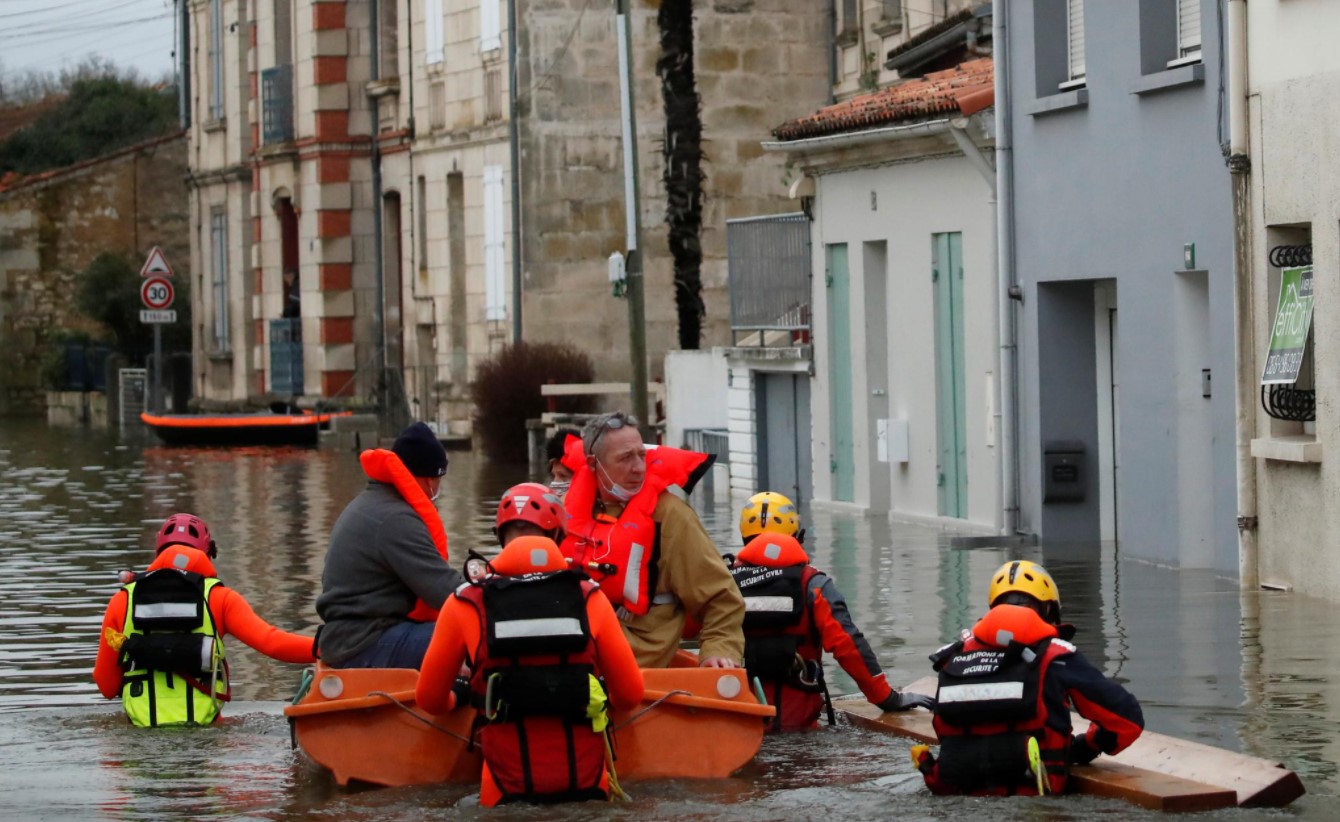Southwestern France was hit by heavy flooding on Monday following days of torrential rain, and several other regions including eastern Paris were on flood alert ahead of a cold snap expected later this week.
The worst flooding was in the town of Saintes, 115 km (71 miles) north of Bordeaux, where the Charente river stood at a near-record level of 6.20 metres (20 feet). The waters were at waist level in several streets and knee-deep in large parts of the town.
Hundreds of people were evacuated as water seeping into cellars knocked out power supplies. Local authorities laid beams on cinder blocks so residents could walk from flooded houses to dry land.
To the southeast of Bordeaux, where the river Garonne flooded large areas between Marmande and La Reole last week, floodwaters were receding, but the waters of the Charente were not expected to fall before Wednesday, local authorities said.
-We are at a peak level now. We expect water levels to rise a little more in the coming days, and to subside from mid-week- a Charente-Maritime spokeswoman said.
The city of Cognac, centre of brandy production on the Charente river, also saw several streets flooded.
